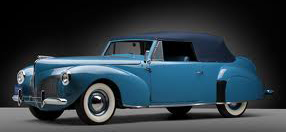Who’s The “General” At Your Dealership?
A few months ago, I finished the biography of Abraham Lincoln, “Team of Rivals,” that inspired the award-winning movie, “Lincoln.”
The book struck me as more than just a masterfully written look back at one of our nation’s best presidents. In fact, I found “Team of Rivals” offered multiple lessons in leadership, revealed as Lincoln addressed ever-thornier challenges during his ascendancy to the presidency and the darkest hours of the Civil War.
One of Lincoln’s greatest challenges came from an assortment of generals who, in the heat of battle and beyond, proved to be ineffectual leaders. Their missteps and mistakes caused repeated setbacks for Lincoln’s goal of ending the Civil War and uniting the nation.
I th ought of Lincoln’s struggles with top generals after talking with several dealers at the recent National Automobile Dealers Association (NADA) event about their current difficulties in used vehicles.
ought of Lincoln’s struggles with top generals after talking with several dealers at the recent National Automobile Dealers Association (NADA) event about their current difficulties in used vehicles.
The dealers are in varying stages of implementing what I call the Velocity strategy for used vehicles—where market data and return on investment (ROI) are the chief guides for inventory management, pricing and merchandising decisions to maximize turn and profitability.
The dealers offered a variety of pain points—prices too high for the market, an inability to recondition cars quickly, persistent inventory age issues, too many appraisals that “bury” the car, too much discounting with customers, sloppy merchandising, difficulty finding the “right” inventory and others.
I asked these dealers what they would consider the No. 1 reason their dealerships weren’t able to work through these problems. The most common response: A lack of “buy-in” from key managers at the dealership, including the general manager or GM.
“I’m definitely losing my patience,” one dealer told me. “The reasons I get from GM sound an awful lot like excuses.”
That’s when Lincoln and “Team of Rivals” came to mind. The book notes that Lincoln sometimes faced direct resistance, if not insubordination, from top generals. It also highlights how Lincoln remained loyal toward these generals, even as they disappointed him with their performance.
I started wondering about the parallels between Lincoln’s generals and dealership managers charged with reinventing their used vehicle operations. To be sure, the challenges are different, but there are key similarities:
First, the terms of engagement are different. Today’s used vehicle buyers shop online and largely find the car they want before they get to the dealership. This shift has significant implications for the way dealers acquire, price, recondition and retail their used vehicle inventories. Yet, many dealership GMs and managers stick to what they know, which sinks their chances for the outcome their dealer expects.
Lincoln’s generals faced a similar challenge: Their conventional rank-and-file style of engagement was often ineffective against the guerilla and trench warfare tactics their Confederate counterparts employed.
Second, the little things matter a lot more than they used to. I often say, “there’s a thousand things a dealer has to get right on every used vehicle” to expect a profitable outcome. That’s not much of an overstatement considering the importance of getting the “right” car, reconditioning it, and then putting it online with quality photos, compelling descriptions and market-guided pricing. In this environment, it’s easy for dealership GMs and managers to get distracted, and focus on the wrong things, or lose their focus on the “turn and earn” strategy entirely.
For his part, Lincoln fretted on more than one occasion that a particular general lost sight of broader campaign strategy in the heat of battle, leaving an opportunity untaken or another Union force vulnerable.
Finally, the most-successful dealerships achieve higher levels of profitability and success only after they tear down silos, get all departments to work together and align every objective to maximizing the “total gross” of the dealership. In my latest book, Velocity Overdrive: The Road to Reinvention, I describe how the used vehicle department functions as the hub of a “wheel of fortune” that can lift sales and profitability across the entire dealership. It is difficult for some GMs and managers to shed their backgrounds and biases toward a particular department and embrace this “total gross” management mindset.
Lincoln also struggled to achieve harmony among his generals. Eventually, though, he appointed Gen. Ulysses S. Grant to command all Union forces. Together with other generals, Lincoln and Grant aligned Union forces under a strategy that simultaneously engaged Confederate troops and cut off their supplies. The strategy ultimately resulted in Confederate General Robert E. Lee surrendering to Grant at Appomattox Court House.
I liked how one dealer at NADA digested the comparisons I made between Lincoln’s struggles with his generals and the difficulties dealers encounter as they transform their used vehicle operations: “I need to be more like Lincoln, and my GM needs to be more like General Grant.”
“Bingo,” I said.
